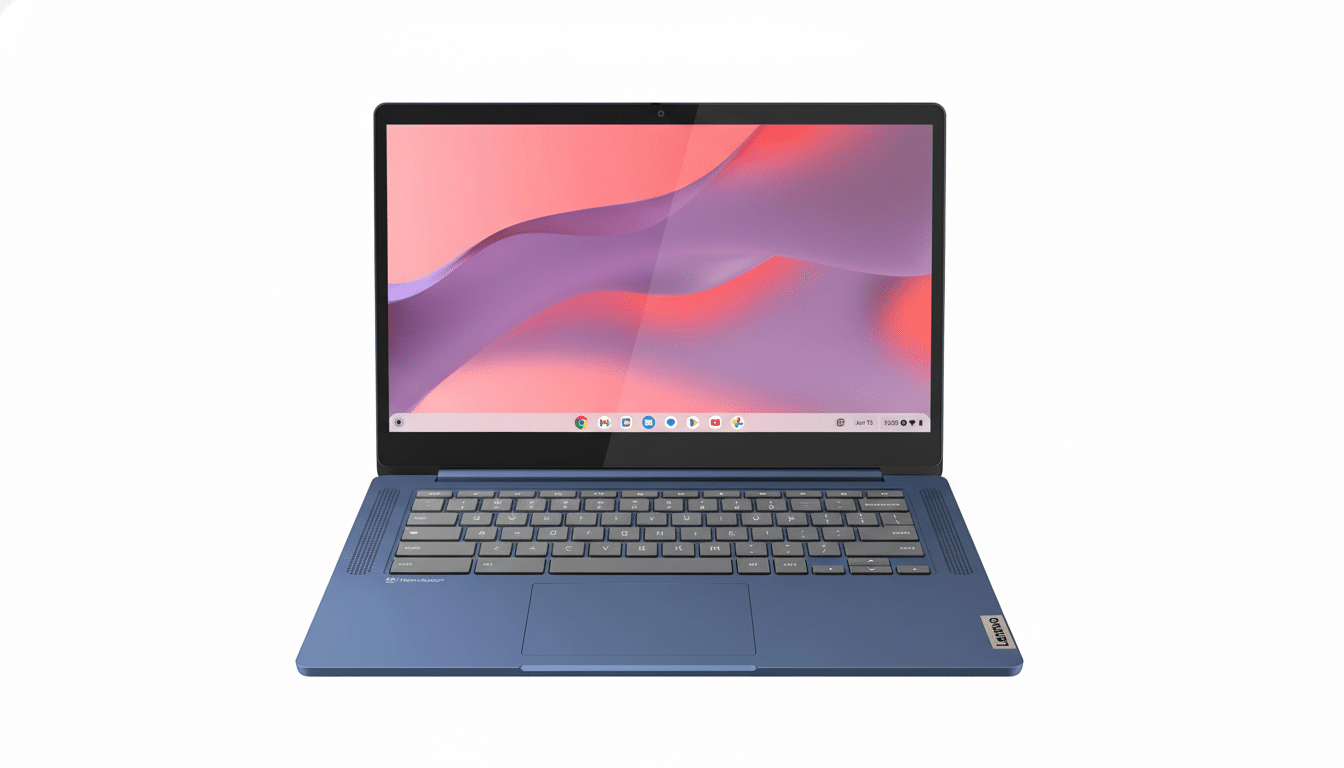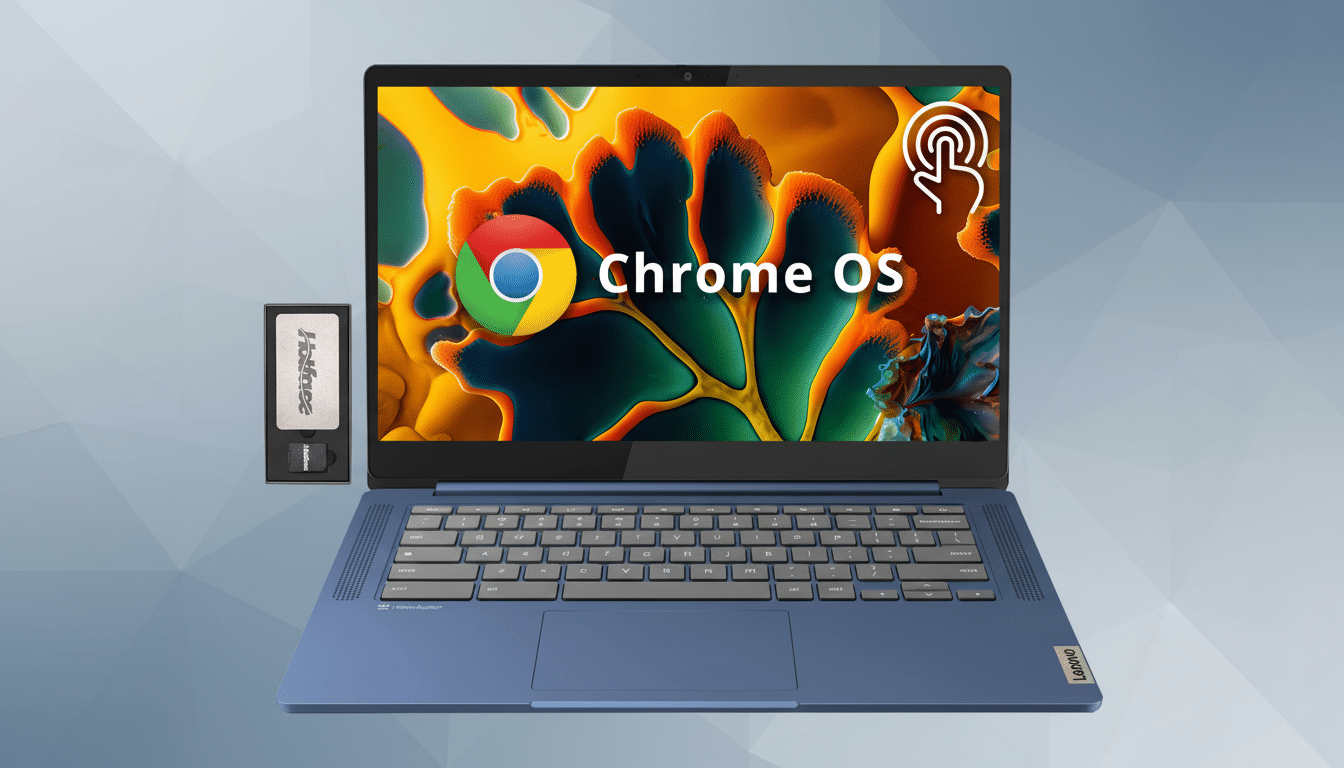I waded through dozens of listings to locate the true budget pick-out-for-yourself option of Prime Day, and it is this Lenovo IdeaPad Slim 3 Chromebook, which is on sale for $176 — it’s the one I’d actually recommend most people buy. It’s not going to (metaphorically) turn heads, but it nails the basics: solid ChromeOS performance, all-day battery strength, and the ports you need for contemporary use cases — at a price that cuts well under most entry-level Windows laptops.
What You Get with the Lenovo IdeaPad Slim 3 Chromebook
The IdeaPad Slim 3 Chromebook is equipped with a MediaTek Kompanio 520 processor, alongside 4GB of memory and 64GB eMMC storage. That’s not much on paper, but in ChromeOS that’s plenty for email, Docs, Sheets, Meet, Slack, and a dozen browser tabs without a single hitch. The ARM-based Kompanio chips are optimized for power efficiency, which helps the system run quietly and cool while drawing less energy from the battery.

The 14-inch HD (but probably not high-res) display is made for work, not for scrutinizing pixels. Text and UI elements are easily legible, and the size gives you plenty of canvas for side-by-side documents. You also receive a 720p webcam with a physical privacy shutter — small detail, big peace of mind — and a surprisingly comfortable keyboard for the price.
Connectivity is down to the basics: a USB-C port, regular USB-A, a headphone jack, and the microSD slot for cheap storage expansion.
And a couple of other things are important, because 64GB is small and fills up quickly; the microSD card can store media and downloads, saving the internal drive for apps and offline files.
Lenovo claims the battery will last up to 13.5 hours. Realistically, you can expect less with a mix of web, video, and calls — but ARM-based Chromebooks consistently outlast comparably priced x86 machines in independent lab tests from outlets that benchmark battery life. It’s so light (2.87 pounds, with a lean chassis) you’ll find yourself chucking it into a backpack without even giving it a thought.
Why This Deal Makes Sense at the $176 Prime Day Price
At $176, you’re a long way from what the market researchers typically track as the average selling price of Chromebooks in the consumer channel (IDC says ASP was $261 during Q2; Canalys puts it a lot higher: at around $325). The discount is roughly 20 percent off the usual $219 list, but this is about that hard number: Under-$200 for an effective brand-name 14-inch laptop with up-to-date ports and guaranteed update life isn’t to be found outside of flash events.
The value proposition is also heavily based on ChromeOS. Google’s platform boots rapidly, updates are handled in the background, and it avoids the slowdowns that have plagued aging budget Windows machines. Google has published elongated update guarantees for most recent Chromebooks, and you can look up the support window for this model in Settings under “About ChromeOS.” That transparency is not always true in the bargain laptop aisle.

For students, frequent travelers, and people who live in Gmail, Drive, and Meet, this setup will be more than enough. Google Play apps are often smooth if they’re light — think Pocket, Spotify, or Kindle, for example — and you can access Linux support if basic developer tools suit your needs (the RAM will cramp heavy workloads), but that’s as far as customization goes.
Trade-Offs to Know Before You Click ‘Buy’
There are always compromises to be made with a budget pick. The display is HD rather than Full HD, so images and videos won’t be quite as sharp as they would on pricier panels. All four gigs of memory are fine for strict multitasking, but if you frequently have dozens of tabs open, consider stepping up to a model with 8GB.
Other than that, the storage is stingy — and on purpose — since Chromebooks are designed to depend upon cloud-based services. Expect to use Google Drive for documents and the microSD slot for media and downloads. If you need large local files for powerhouse video editing or game libraries, this is the wrong tool; for you, a midrange Windows machine or higher-spec Chromebook would be more appropriate.
In terms of performance, the Kompanio 520 is designed for daily use. Web apps, Docs, and streaming are its wheelhouse. Pushing the laptop with demanding Android games, heavy photo editing, or complex spreadsheets loaded with massive datasets, for example, will show its limits. That being said, for the tasks most people purchase a Chromebook to do, it remains responsive.
How I’d Set It Up for Fast, Reliable ChromeOS Use
Switch on offline access in Google Drive for your most important files and pin essential apps to the shelf to curb tab sprawl. Throw in a 128GB or 256GB microSD card from a brand you know (local media should always be stored on an SD card). In Chrome settings, enable Memory Saver to prevent background tabs from consuming RAM — something Google claims has a dramatic impact on memory usage for low-spec devices.
Make sure the automatic upgrade window appears in your “About ChromeOS” panel and immediately apply any available update. If you’re going to be doing lots of video calls, test the mic and camera in Meet and get used to adjusting the privacy shutter — little habits like that can make for better reliability over time.
Bottom Line: the Best Prime Day Budget Chromebook Pick
If your list is affordable, light, reliable, and supported by regular software updates, then the $176 Lenovo IdeaPad Slim 3 Chromebook is the shrewdest Prime Day deal I sniffed out. It’s not the quickest Chromebook, and it’s not the sharpest display in the stack either, but what you get for your money here is genuinely excellent. For commuters, students, and anyone in need of a no-drama laptop for everyday tasks, this deal is the one to seize.

